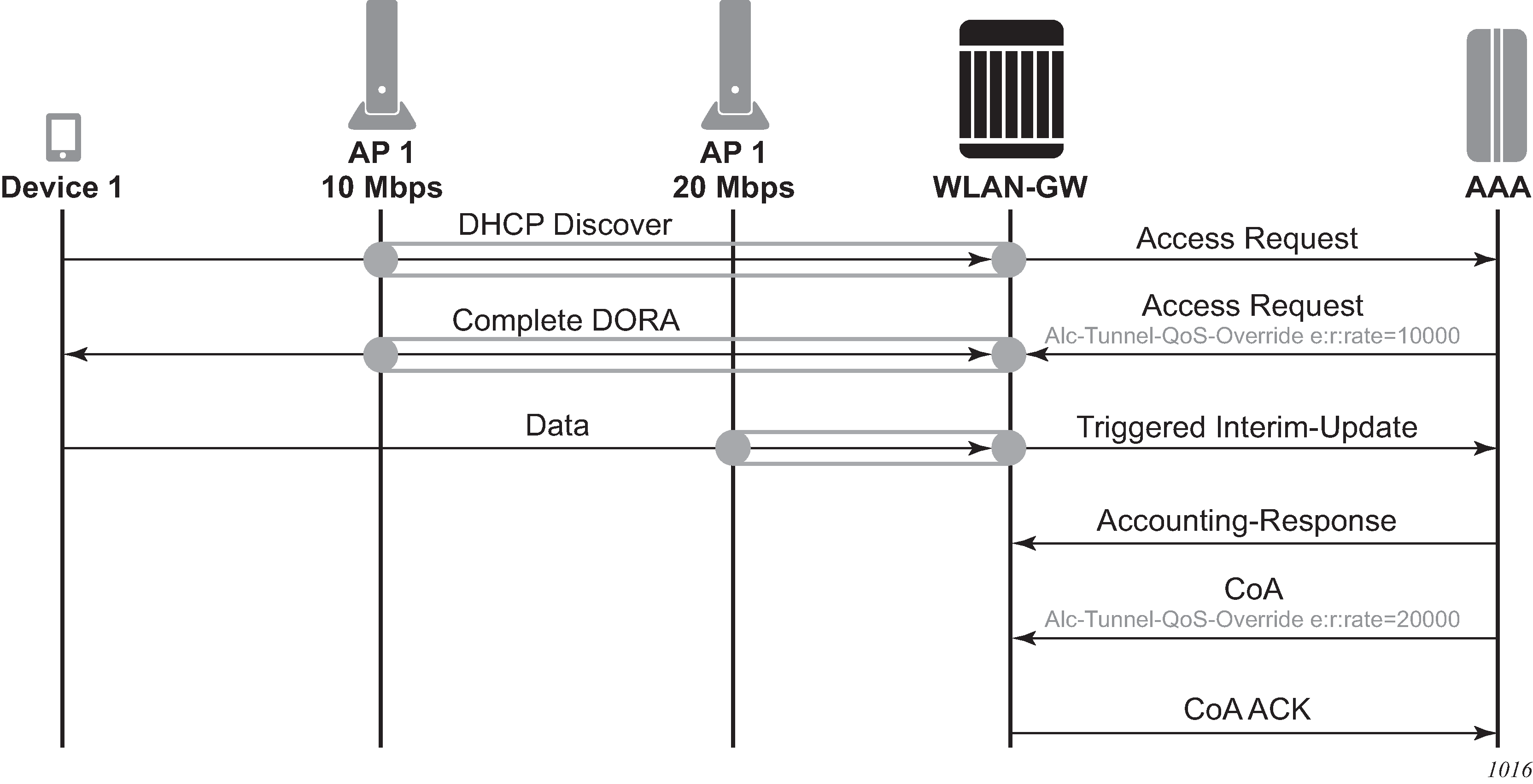Per-tunnel QoS overrides can be provided to have more specific values for specific tunnels. This allows the WLAN gateway to accommodate a heterogeneous set of access points in one Wi-Fi network; for example, provisioning different bandwidth for homespots and hotspots. For a detailed list of allowed overrides and values, see the 7450 ESS, 7750 SR, and VSR RADIUS Attributes Reference Guide.
QoS overrides can be signaled via RADIUS in UE authentication and in UE CoA. The override is applied to the tunnel where the UE is currently active. Therefore, two scenarios should be considered:
If the first UE on a tunnel is also a new UE that is authenticated, any tunnel QoS override can be signaled in the Access-Accept message for that UE.
If the first UE on a tunnel is a previously authenticated UE that moved from another tunnel, a mobility triggered Interim Update can be sent and used as a trigger to send a CoA with the per-tunnel QoS overrides.
Figure: QoS override flows shows flows for both scenarios.

To guarantee that the CoA is applied to the correct tunnel, use the CoA key consisting of the nas-port-id and the UE IP address; both can be derived from the interim update. In the WLAN gateway, the nas-port-id identifies the tunnel to which the UE is linked, and, if a mismatch is detected, the CoA is not applied. Other CoA keys are also supported but do not offer this guarantee.